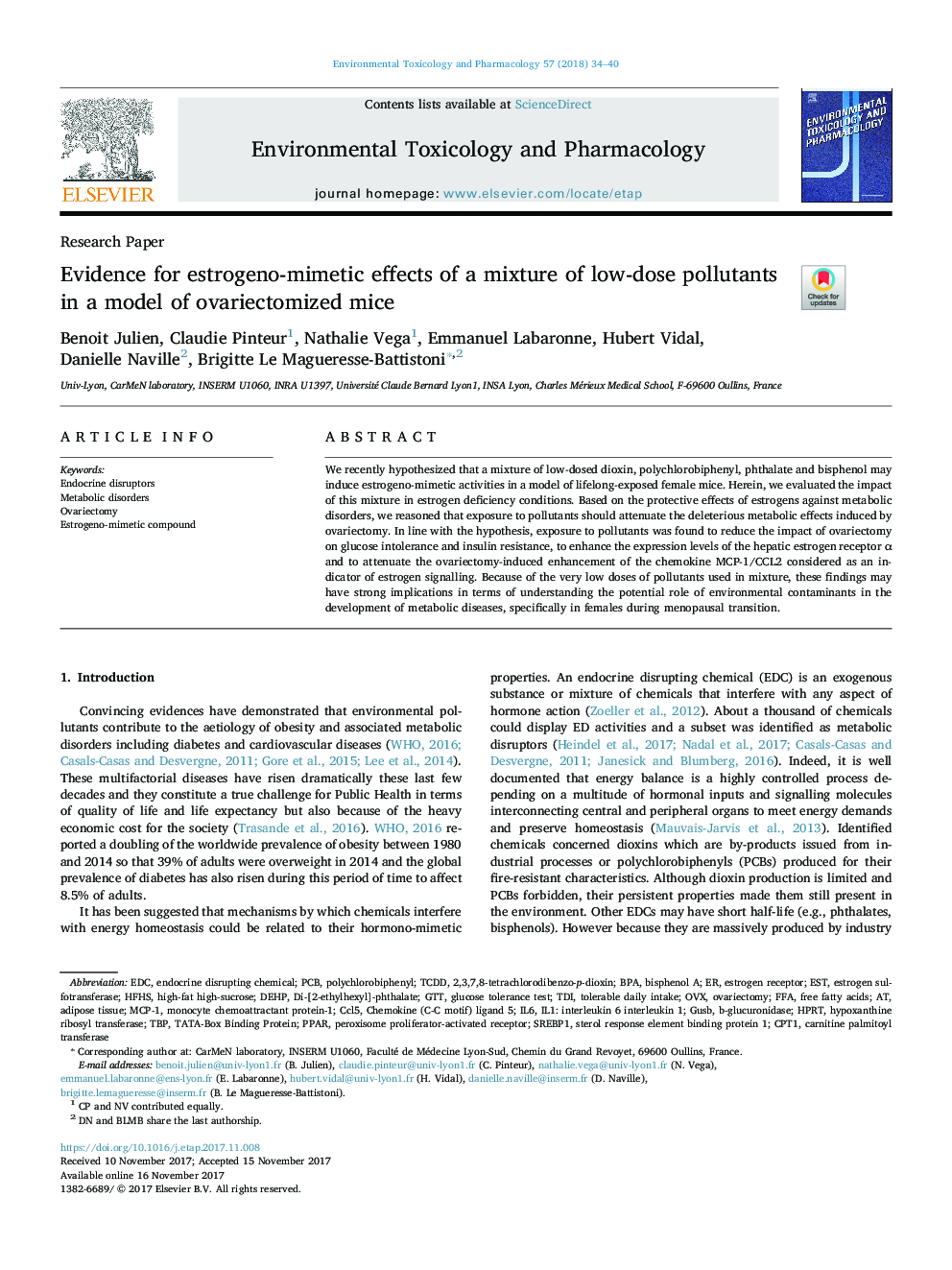| Article ID | Journal | Published Year | Pages | File Type |
|---|---|---|---|---|
| 8546018 | Environmental Toxicology and Pharmacology | 2018 | 7 Pages |
Abstract
We recently hypothesized that a mixture of low-dosed dioxin, polychlorobiphenyl, phthalate and bisphenol may induce estrogeno-mimetic activities in a model of lifelong-exposed female mice. Herein, we evaluated the impact of this mixture in estrogen deficiency conditions. Based on the protective effects of estrogens against metabolic disorders, we reasoned that exposure to pollutants should attenuate the deleterious metabolic effects induced by ovariectomy. In line with the hypothesis, exposure to pollutants was found to reduce the impact of ovariectomy on glucose intolerance and insulin resistance, to enhance the expression levels of the hepatic estrogen receptor α and to attenuate the ovariectomy-induced enhancement of the chemokine MCP-1/CCL2 considered as an indicator of estrogen signalling. Because of the very low doses of pollutants used in mixture, these findings may have strong implications in terms of understanding the potential role of environmental contaminants in the development of metabolic diseases, specifically in females during menopausal transition.
Keywords
DEHPsterol response element binding protein 1SREBP1HFHSHprtCPT1IL6Ccl5OVXTDIGUSBBPATCDDPPARMCP-1GTTFFAPCBEDCTBP2,3,7,8-Tetrachlorodibenzo-p-dioxinMetabolic disordersEndocrine disruptorsESTestrogen sulfotransferaseFree fatty acidsOvariectomyAdipose tissueBisphenol Aglucose tolerance testendocrine disrupting chemicalTolerable daily intakeTATA-box binding proteinmonocyte chemoattractant protein-1polychlorobiphenylcarnitine palmitoyl transferasechemokine (C-C motif) ligand 5Estrogen receptorperoxisome proliferator-activated receptor
Related Topics
Life Sciences
Environmental Science
Health, Toxicology and Mutagenesis
Authors
Benoit Julien, Claudie Pinteur, Nathalie Vega, Emmanuel Labaronne, Hubert Vidal, Danielle Naville, Brigitte Le Magueresse-Battistoni,
